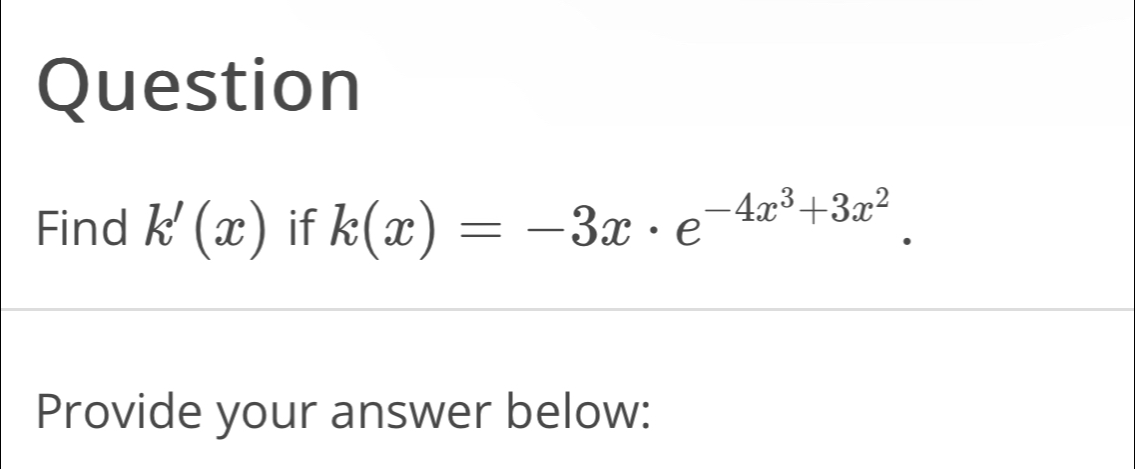AI tutor
Full solution
Q. Find if .
- Identify Components: Identify the components of the function that will require the use of the product rule and the chain rule for differentiation. The function is a product of two functions, and . The exponential function also contains a composite function, which will require the use of the chain rule.
- Apply Product Rule: Apply the product rule for differentiation, which states that the derivative of a product of two functions is the derivative of the first function times the second function plus the first function times the derivative of the second function. Let and . Then, .
- Differentiate : Differentiate with respect to to get .
- Differentiate : Differentiate with respect to using the chain rule. The chain rule states that the derivative of a composite function is the derivative of the outer function evaluated at the inner function times the derivative of the inner function. Let be the inner function. Then, .
- Differentiate : Differentiate with respect to to get .
- Substitute into : Substitute into the expression for to get .
- Substitute into Product Rule: Substitute , , and into the product rule expression to get .
- Simplify Expression: Simplify the expression for by distributing and combining like terms.
- Factor out Common Factor: Factor out the common factor to get .
- Distribute : Continue simplifying the expression by distributing inside the parentheses. .
- Combine Like Terms: Combine like terms inside the parentheses to get the final expression for . .

